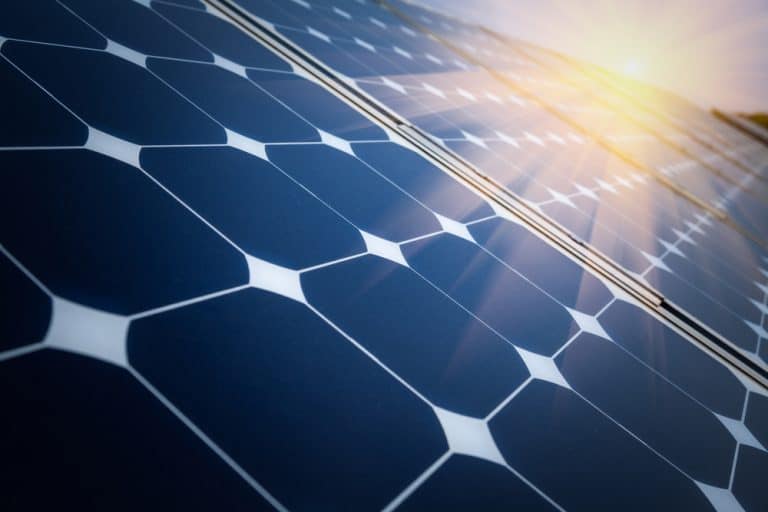Reno NV Photovoltaic Usage Monitoring

Having solar-generated power brings excitement, especially when you can see the difference in your power bill. Before we review monitoring, however, we need to understand how metering works in Reno, Nevada, and other surrounding areas, like Carson City.
Reno Solar Panel Metering Expectations
Photovoltaic systems help Reno and Carson City residents to produce their power and obtain energy independence. Solar power, however, has a flaw. It only produces power when the sun shines on the array.
Solar panels’ production and energy efficiency depend on the weather since the system can’t store excess production for later use on its own. Solar homeowners without energy storage rely heavily on weather patterns for their energy needs.
Thankfully homeowners have a couple of options. Often Utilities have net metering policies, which help offset the excess solar power the system can’t store. Solar companies also offer forms of solar backup to compound the benefits of solar. While NV Energy has a storage incentive program, utilities don’t always do what’s in solar’s best interest.
Reno, Nevada/Carson City Net Metering
Since the Nevada PUC debacle in 2015, many are leery of acquiring solar. However, because of what happened to incentives, measures now protect Nevada solar customers.
NV Energy Net Metering Policy Changes
NV Energy now has a solar metering policy in place that benefits solar customers. Solar customers who purchase solar within one of the NV Energy rate tiers now receive a fair rate for their excess generation with a 20-year no-change guarantee.
The net metering rate decreases after every 80 megawatts of installed solar. The first 80 megawatts of solar offered solar customers 95 percent of the retail rate for their excess electricity. Now we have reached the last tier, which offers solar customers 75 percent of the retail rate.
How Your Nevada Solar Inverter Works
Most homes come with a solar monitoring system. If the homeowner doesn’t have a home battery, the monitoring system typically connects to the inverter.
Inverter Basics
The inverter connects the solar array to the home. The direct current from the solar panels reverses to alternating current in the inverter.
Direct current (DC) has a constant flow of electrons. Alternating current (AC), however, switches directions about 50 to 60 times a second.
Since it’s easier to convert to a higher or lower voltage, most of our homes use AC. Most electronics, however, use DC. The AC adaptor in the power cord switches the AC from the outlet into DC so it can recharge the battery or power the device.
SolarEdge Inverter Monitoring System
Of the many different inverters out there, Go Solar Group uses the SolarEdge inverter. With the optimizers on the back of each solar panel, this string inverter can monitor individual solar panels, instead of only seeing the overall production.
How Inverter Monitoring Works
Although daily production can prove helpful when determining the best time to do a load of laundry, it’s not the best way to monitor solar generation. Some days have hardly any sun. The system design accounts for these off days by producing more than the home needs on sunny days.
Monthly production shows the homeowner how well the array offsets the days with less sun. Yearly production helps customers see how the electricity credits from a sunny month covered a less productive one.
Using the Tesla Powerwall Home Battery
The Powerwall has a lithium-ion home battery designed to store excess solar generation. Those who can afford this solar backup option have the choice to power their entire home with it.
Tesla Powerwall Specs
One Powerwall can store up to 14 kWh of energy for later use with 13.5 kWh usable on demand. These batteries come with a 10-year warranty. However, how long they will last depends on how often the battery is used. Go Solar Group is a certified Tesla Powerwall Installer in the Reno Market.
Powerwall Monitoring
The Tesla app monitors home usage, solar production, and The Powerwall. When setting up the app, you can choose to customize it.
The first option is the backup-only setting. This setting reserves the Powerwall for emergency use. The Powerwall charges whenever needed, so the battery always has a 100 percent charge.
The second option is self-powered. In this mode, the Powerwall will store solar energy during the day. It then discharges its stored power at night.
The last choice is the advanced option, which accommodates individuals with time-of-use metering. Those who have solar installed have two options in this setting, either balanced or cost savings.
The balanced option stores energy from solar during the day and discharges it at night. This option works best for individuals charged more for night usage.
The cost savings option allows the battery to determine the best time to charge and discharge. It determines the best use of the battery from the information in the price schedule. You can edit your price schedule on the app when you select the cost savings option.
Tesla Powerwall Alternative: Solar Backup
In conclusion, solar on its own will not power a home in an outage. For those who want power in these scenarios, a solar storage option like the Tesla whole house battery is necessary. If you would like to make sure you have power but don’t have the resources to get a home battery, Go Solar Group has smaller options, too. We offer several different solar backup options, so every solar home can have electricity when the grid goes down.



Send a Message
Oops! We could not locate your form.